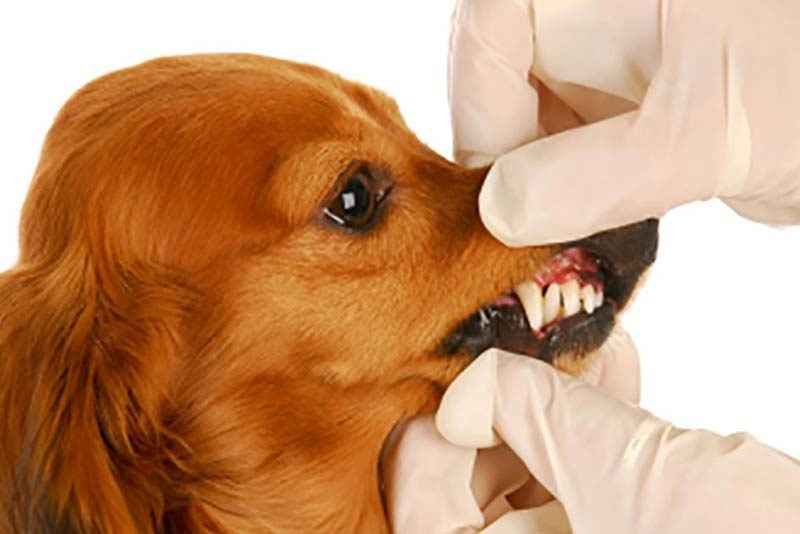
Your dog depends on you to help him stay healthy. Good dental hygiene can play an important role in keeping your dog in top form. Clean your dog’s teeth and check his gums regularly. A bad tooth or gum disease could be giving your dog a lot of pain. Look for signs of discomfort and have a veterinarian examine your dog’s mouth.
You can check your dog’s dental health by inspecting his mouth. If his gums are cherry red, he has gingivitis. If you can smell foul breath, he has a bacterial infection — look for tartar on the teeth. The odor could also indicate an abscessed tooth. Healthy gums are firm and pink, black, or spotted. Young dogs have smooth white teeth that tend to darken with age. Puppies have 23 baby teeth, and adults have around 42 permanent teeth, depending on the breed. As adult teeth come in, they push baby teeth out of the mouth.
To check your dog’s mouth, talk to him gently, then put your hand over the muzzle and lift up the sides of his mouth. Check that adult teeth are coming in as they should, and are not being crowded by baby teeth. Look for soft white matter or hard white, yellow, or brown matter on the teeth. This is plaque or tartar and should be brushed away. Make sure your dogs gums are healthy and his breath is not foul-smelling. Mouth infections can lead to serious problems in the gums and other parts of the body, including the heart, so it’s important to give your dog’s teeth and mouth special attention.
It is difficult to detect oral pain in a dog. In rare circumstances he might refuse a hard treat or chew on one side, but in most cases pain goes undetected. However, once veterinarians remove a problem tooth, the dog has increased vitality and the owner then recognizes the agony their dog has suffered.
Clean your dog’s teeth frequently with special toothbrushes and toothpaste designed for dogs. If your dog balks at having his teeth brushed, get him used to it by rubbing his teeth and gums with your finger. Then put a little of the toothpaste on your finger and let him sniff and lick it; do the same with the toothbrush. Make sure to provide chew toys or other products that will help clean his teeth. As your dog gets older, he may have a buildup of tartar that requires special cleaning by a veterinarian. A dental examination is an integral part of a dog’s annual visit. Your vet should inspect your dog’s mouth for loose teeth, inflamed and receding gums, as well as plaque, tartar, and odor. If dental disease is diagnosed, your dog needs his teeth professionally cleaned. With severe gum disease and tooth abscessation, your veterinarian may extract diseased teeth.
This article is intended solely as general guidance, and does not constitute health or other professional advice. Individual situations and applicable laws vary by jurisdiction, and you are encouraged to obtain appropriate advice from qualified professionals in the applicable jurisdictions. We make no representations or warranties concerning any course of action taken by any person following or otherwise using the information offered or provided in this article, including any such information associated with and provided in connection with third-party products, and we will not be liable for any direct, indirect, consequential, special, exemplary or other damages that may result, including but not limited to economic loss, injury, illness or death.

